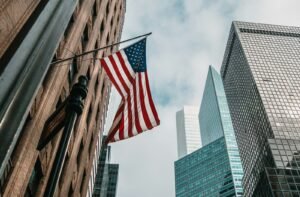Investing in Melbourne’s Western Suburbs: Growth Potential and Risks
The Australian property market is vast and diverse, with significant affordability gaps between cities and suburbs. For investors priced out of Sydney or Melbourne’s inner suburbs, Melbourne’s western growth corridor—spanning areas like Hoppers Crossing, Deer Park, and Tarneit—offers a compelling case based on affordability, infrastructure development, and population growth. But why haven’t these “growth suburbs” exploded in value over the past few years? Let’s explore the value proposition and the risks.
Market Overview
According to the Victorian Property Sales Report (September 2024), Melbourne’s median house price dropped 1.2% to $850,000. Western suburbs continue to be more affordable, with homes in areas like Hoppers Crossing often well below this median. However, these areas have shown only modest capital growth in recent years.
Meanwhile, ABS data reveals that Greater Melbourne added 142,600 residents in 2023-24, with the largest population growth in outer west suburbs like Fraser Rise, Rockbank, and Mount Cottrell. This reinforces the demand pressure in the western corridor.
Why Invest in Melbourne’s West?
Affordability
With a budget of $800,000, investors can secure a full-sized house in western suburbs, often with land—a rarity in major metro areas. This positions the west as a go-to option for first-home buyers and investors seeking long-term capital appreciation.
Infrastructure and Connectivity
The Victorian Big Build is transforming transport in the west. Key projects include:
- New Tarneit West Station
- West Gate Tunnel
- Melbourne Airport Rail Link (underway)
These upgrades aim to reduce travel time to the CBD and improve liveability for western suburbs residents.
Land Supply and Future Development
Unlike inner-city areas, Melbourne’s west has abundant greenfield land. This allows developers to build new housing at scale, which meets population demand but also tempers price growth. According to the Urban Development Institute of Australia, there is over 15 years’ worth of zoned land available in the region.
Key Risks for Investors
Oversupply Risk
As mentioned, ample land means supply can scale up quickly. When supply meets or exceeds demand, capital growth tends to be subdued. Investors banking solely on capital gains may be disappointed without strong population or employment growth to support appreciation.
Victoria’s Tenant-Favoring Laws
Recent tenancy reforms have improved renter rights significantly. According to the Consumer Affairs Victoria website, landlords now face:
- Restrictions on rent increases (once per year)
- Prohibition on no-grounds evictions
- Mandated minimum property standards
This can impact investor flexibility, rental yields, and renovation strategies.
Land Tax Changes
In 2023-24, Victoria introduced a COVID Debt Repayment Plan that increases land tax rates for many investors until 2033. This adds a long-term cost consideration for those building larger portfolios in Victoria.
Limited Local Employment Options
Despite improved transport, many residents still commute to the CBD. Local employment hubs like Werribee and Sunshine are growing, but still trail inner-city job nodes in both quantity and diversity. Economic decentralization may help long term, but progress has been slow.
Why Prices Have Stagnated
Several factors have limited strong price growth in Melbourne’s west:
- Oversupply: Continued release of new estates creates price competition.
- Investor Perception: Historically lower growth rates and stigma around western suburbs persist.
- Inertia: Areas without significant lifestyle appeal or scarcity take longer to gentrify.
Future Growth Catalysts
Transport and Connectivity
Completion of large-scale infrastructure projects could trigger uplift in property prices, especially in suburbs connected by new rail or freeway extensions.
Employment Decentralization
The National Employment and Innovation Clusters strategy highlights western centers like Sunshine and Werribee as future economic engines. If local employment scales, housing demand will rise with it.
Changing Lifestyles
Post-COVID preferences for space, affordability, and flexible work are pushing more people to fringe areas, especially when lifestyle infrastructure (parks, schools, shopping precincts) continues to improve.
Conclusion
Melbourne’s western suburbs offer genuine value for investors who prioritize affordability, infrastructure-led growth, and long-term development. However, these markets carry nuanced risks—from oversupply to regulatory changes—that require careful due diligence.
These suburbs may not deliver rapid appreciation, but their fundamentals suggest solid, steady performance—particularly for investors with a long-term horizon and a strong property selection strategy.

